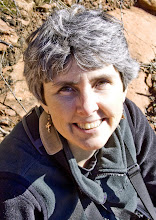Photography at the extremes of daylight (dawn and dusk) can be the most rewarding, but also difficult. Light at these times is often more colorful, in this photo, of Yosemite Falls taken in Yosemite just before sunset, the light is golden/brown. The advantage, other than color, is that the sun at the horizon acts like a spotlight and illuminates parts of the scenery that in a direct overhead light at noon might not be well seen as the light rays pass in parallel. The tricky part is that there are also more shadows in other parts of the photo, as seen in these photos. Metering the area in the spotlight will usually give you the best result. You can also "cheat" as I did in these, by bringing out the shadow areas better using HDR (see a different posting for more on HDR). The falls were really the point of the photo (being the highest falls in North America and quite beautiful), but if I had metered the light in the area of the falls, the detail in the area of the golden light falling on the granite cliffs would have been lost by overexposure.
Wednesday, January 14, 2009
Tricky Lighting
Photography at the extremes of daylight (dawn and dusk) can be the most rewarding, but also difficult. Light at these times is often more colorful, in this photo, of Yosemite Falls taken in Yosemite just before sunset, the light is golden/brown. The advantage, other than color, is that the sun at the horizon acts like a spotlight and illuminates parts of the scenery that in a direct overhead light at noon might not be well seen as the light rays pass in parallel. The tricky part is that there are also more shadows in other parts of the photo, as seen in these photos. Metering the area in the spotlight will usually give you the best result. You can also "cheat" as I did in these, by bringing out the shadow areas better using HDR (see a different posting for more on HDR). The falls were really the point of the photo (being the highest falls in North America and quite beautiful), but if I had metered the light in the area of the falls, the detail in the area of the golden light falling on the granite cliffs would have been lost by overexposure.
Friday, January 2, 2009
Composition: Rule of 3's
Composing for photography, as a rule of thumb involves "3's"- both vertically and horizontally. Divide your scene into thirds looking horizontally and vertically. In this photo, Launching Pad, a viewing place on Sprague Lake in Rocky Mountain National Park, the platform occupies roughly the middle third looking both horizontally and vertically, Horizontally, additionally, there is the sky with the treeline, the frozen lake, and the ground at the foreground. In some photos, you'll want to vary the thirds or do interesting angles, but especially in the beginning of thinking about composition try to divide the scene into thirds.
Subscribe to:
Posts (Atom)
